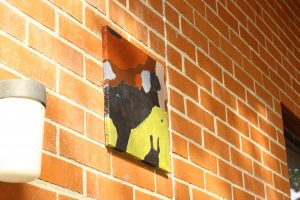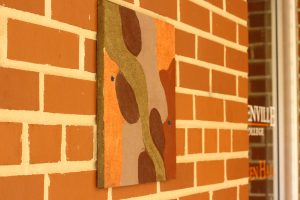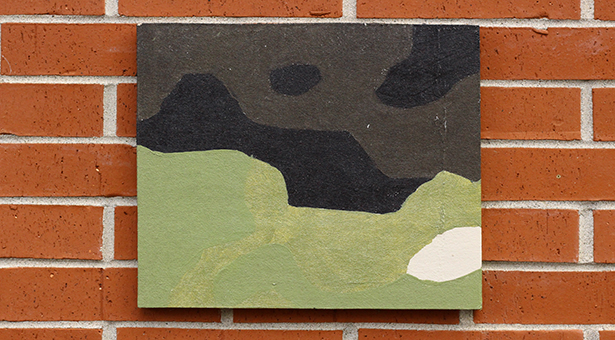Written by Tabitha Rice. Media by Taylor Neal.
“I want to give you a piece of art. It’s one square foot and it’s 1/1080 of an icon of Jesus.”
Wait, what?!

Dr. Rick McPeak is trying to recreate the Sinai Pantocrator, the oldest known icon of Jesus. He’s going to do this on 1,080 square foot boards and display them on campus.
In case you are wondering what an icon is, it’s a “painting of Jesus Christ or another holy figure, typically in a traditional style on wood, venerated and used as an aid to devotion in the Byzantine and other Eastern Churches.” Dr. McPeak is taking this description a little further. He is doing more than painting Jesus with his brushstrokes, he is writing Him.
This icon is going to be more than a mural. Dr. McPeak is staying faithful to the traditions of the church by going through the same process a real icon would go through. For him, however, the process started with a digital copy on his MacBook. He uploaded it to Photoshop and put a grid on it to make tracing over the original icon with his finger easier. This process is likened to the yad that is used in the Jewish tradition to keep one’s place while reading the Torah. It looks like a pointing finger.

If you’ve seen random squares around campus, they are a glimpse into Dr. McPeak’s project. He chose this method because it symbolizes the many pieces of the icon coming together to form one image. Dr. McPeak also mentioned how it serves as a symbol of how the “body of Christ is all of us together.”
He takes a four by eight sheet of particle board and cuts it into 32 one square foot squares. If Dr. McPeak makes a mistake he doesn’t fix it:
Little flaws will be everywhere. I think that’s more real than without them. I’m trying to do it flawlessly but when the flaw occurs that just reminds me to be humble.”
The next step is priming. Before any image is ever painted onto the board, the iconographer layers it with twelve layers of gesso, which is a pure white primer. This allows the iconographer to meditate on God as light as the board becomes whiter and whiter. Dr. McPeak explained,
Anyone can do this. It doesn’t take talent; it takes a sort of virtue. A virtue of mere presence to the board. The board changes.”
This experience is an exercise in humility for Dr. McPeak. It’s a massive project with 1,080 boards each and 12 coats of gesso. As of now, he is up to almost 100 boards with about 1,000 left to go. He invites anyone who is interested in the project to help him:
Each step of the way, I’m finding I need to be a little bit more humble.”

This amazing project will be on the back side of Whitlock in the next year. Dr. McPeak commented,
What I’m doing is making literal something we talk about abstractly, that we have a Christ-centered education.”
The center of Greenville campus is Whitlock Music Center. So, it’s only fitting to literalize a Christ-centered education and place Christ in the middle of campus.
The boards that are currently around town are made of Styrofoam and not the real icon. Don’t try to piece them together because the full amount is not on campus, especially since some are found in West Palm Beach, FL, St. Louis, and even Africa.
There will be a follow-up article about what the icon means to Dr. McPeak and his religious views on the subject, so keep an eye out! While you’re walking around campus, look out for these camouflage-esque squares and think about Jesus and how He can be found everywhere.




























